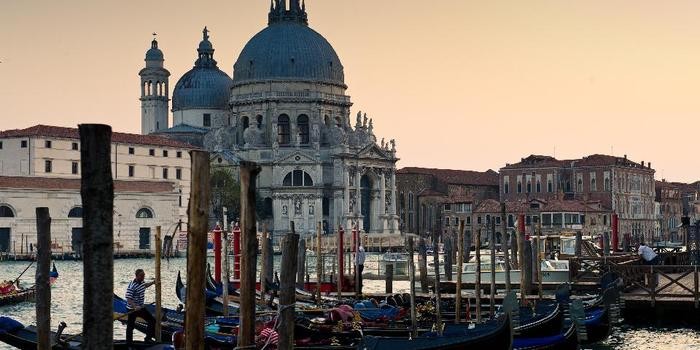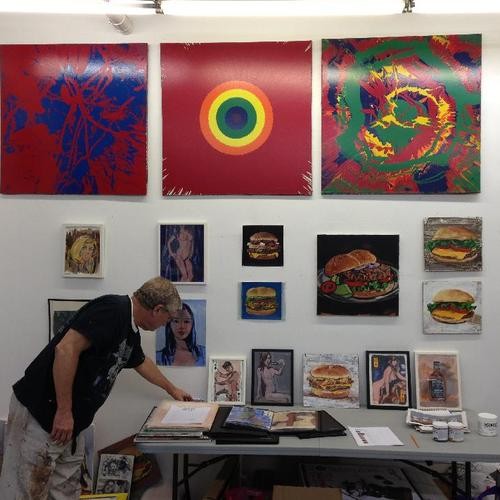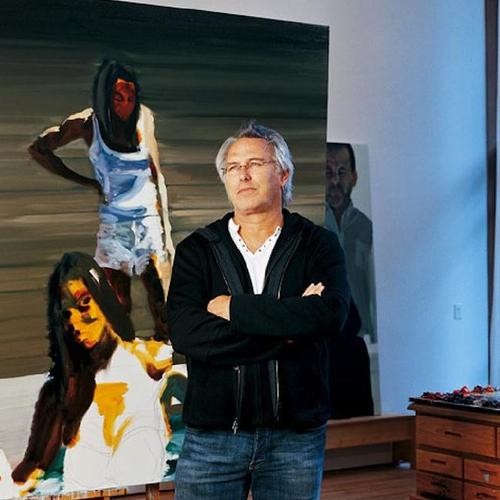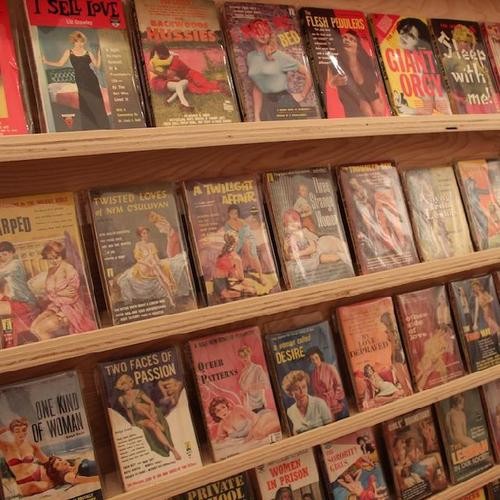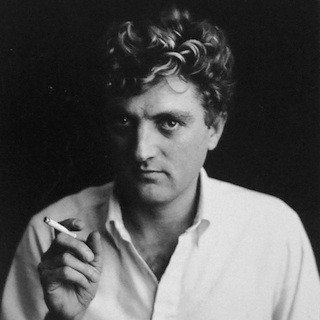Venice is an unreal city, a finely crafted mirage that relies as much on fable as history. With charms that few can resist, the city is a goddess of seduction. It should be named after Venus, but alas it is not.
The challenge for the Venice Biennale, then, is to equal the city’s own beauty and grand past—no small task. The outlook is hopeful for the 2013 Venice Biennale, which officially kicks off on June 1, with individual pavilions from no less than 88 countries and a sprawling “55th International Exhibition,” organized by New Museumcurator Massimiliano Gioni, that includes 150 artists from 37 countries.
The present is measured with the past, and previous Biennales offer many high points. Especially notable is the provocative transformation wrought on the German pavilion in 1993 by Hans Haacke, who broke the stone floor of the space into fragments. The work has become an icon of the resistance to imperial nationalism, now a theme that is well integrated into the contemporary Biennale sensibility.
An equally powerful invocation of imperialist violence was the centerpiece of the United States pavilion at the 2011 biennale, where the Puerto Rico-based art duo Jennifer Allora and Guillermo Calzadilla presented Olympic gymnasts who performed routines on replicas of American Airlines business-class seats, and Olympic sprinters who ran on a treadmill rigged atop an inverted military tank. Though the connection between gymnasts and the U.S. military was uncertain—the mental contortions underlying our ideology of freedom, perhaps?—the noise of the 52-ton machine permeated the biennial park and annoyed everyone, to unforgettable effect.
Another dramatic critique of nationalism was Santiago Sierra’s intervention in the 2003 Biennale, for which he bricked up the entrance to the Spanish pavilion. Though apparently closed without explanation, the building did have a hidden back entrance, available only to those with Spanish passports. Inside, the pavilion was empty, since, as Sierra said, “a nation is actually nothing; countries do not exist.”
Rarer still are the artists who have managed to leave the cloistered grounds of the Giardini, where the various national pavilions are located, and engage the city on its own religious and classicizing terms. A celebrated example was Swiss artist Pipilotti Rist, who for the 2005 biennale transformed a huge baroque church into a sensurround theater, lining the floor with mattresses so the audience could recline like ancient Romans at a banquet and view projections of nymphs and cherubs dancing in giant scale across the far-off ceiling. Though ostensibly a parable of Adam and Eve, it was color-drenched sensorium that brought a pagan feeling to the Catholic city.
When it comes to engaging the fabric of the Venice itself, some artists make it look easy. In 2007, the Ghanaian sculptor El Anatsui draped the façade of the Palazzo Fortuny with a sizeable swath of his trademark golden chain mail made from hammered bottle caps, and he magically conjoined notions of the city as a 15th-century jewel casket with intimations of contemporary globalization and cultural cross-pollination. Similarly, in 2009, the California artist Charles Ray positioned on the Grand Canal an eight-foot-tall, white-painted steel statue of naked boy holding a frog by one leg, which art critic Christopher Knight called a “shape-shifter” that is “at once Greco-Roman and hyper-real.” This work made headlines just recently, as it was removed after protests, to be replaced with a replica of the historic lamppost that previously stood in the spot.
Occasionally a show in a biennale pavilion marks the arrival of an individual artist on the international art scene in a big way. So it was in 2001, when the installation of the minimal gray paintings of Luc Tuymans in the milky white light of the Belgian pavilion was a big hit, presaging his huge future.
Whether 2013 has any such triumphs in store for the biennale visitor remains to be seen. The festival is more inclusive than ever, with first-time participation from Angola, the Bahamas, Bahrain, Ivory Coast, Kosovo, Kuwait, Maldives, Paraguay, and Tuvalu. Even the Holy See is participating.
Relatively new names are the order of the day even for the First World pavilions in the Giardini, such as Anri Sala in the French pavilion, Lara Almarcegui in the Spanish and Valentin Carron in the Swiss. Germany, in keeping with the recent slant of its artists, is once again setting off a quiet anti-nationalist bomb, presenting photographic works by Ai Weiwei, the French-German-Iranian filmmaker Romuald Karmakar, the South African photographer Santu Mofokeng, and Dayanita Singh, who is based in New Delhi.
The U.S. pavilion this year is an all-female affair, featuring the assemblage artist Sarah Sze in a show co-organized by Holly Block, director of the Bronx Museum of the Arts, and critic and curator Carey Lovelace. Women have already taken the prizes in the overall Biennale as well, with Golden Lions lifetime achievement going to a pair of much-liked senior women artists, the ribald Austrian painter Maria Lassnig and the Italian Arte Povera sculptor Marisa Merz.
The celebrated complement to the various solo shows in the national pavilions is the International Exhibition, typically a large-scale theme show organized by a star curator. These events must grapple with their unusual venue, which combines a confusing labyrinth of white-box galleries in what was originally the Italian pavilion in the Giardini with the massive brick-walled spaces of the Arsenale, the city’s ancient shipyard and armory.
Gioni is a young, well-liked curator who is known for ambitious surveys like the New Museum’s “Younger Than Jesus” in 2011 and “10,000 Lives” at the 2010 Gwangju Biennale—shows that have brought him considerable notice. He has more in store for us in Venice, with a wide-ranging survey dubbed “The Encyclopedic Palace” that includes, among other things, a new work by Tino Sehgal and a section curated by Cindy Sherman.
For an ordinary visitor, such an exhaustive display is a bit of a slog, rewarded with the occasional artwork or installation that catches one’s fancy. But for our ever-competitive super-curators (and the art critics who gauge their efforts), this exemplum of “curatorial practice” deserves especially close examination. In a recent Artforum interview, fellow biennale curator Francesco Bonami—whose own 2003 effort was “universally lambasted,” according to Jerry Saltz—suggested that Gioni has abandoned any attempt to say something important in favor of organizing what is “simply a very, very big group exhibition.”
When it comes to such a cat-and-mouse Q&A, Gioni’s definitely got game. The fashionable quest for “the zeitgeist,” he suggests, is now outmoded, and in its stead he favors a “type of anthropological research” that approaches “the image as a tool for knowing the world.” Maybe so. In any case, there will be a lot of art to look at.
Click here to view more works from artists in the international event's national and para-pavilions.
Walter Robinson is an art critic who was a contributor to Art in America (1980-1996) and founding editor of Artnet Magazine (1996-2012). He is also a painter whose work has been exhibited at Metro Pictures, Haunch of Venison, and other galleries; he recently had a critically acclaimed show of new work on view at Dorian Grey Gallery in New York's East Village. Click here to see his previous See Here column on Artspace.











